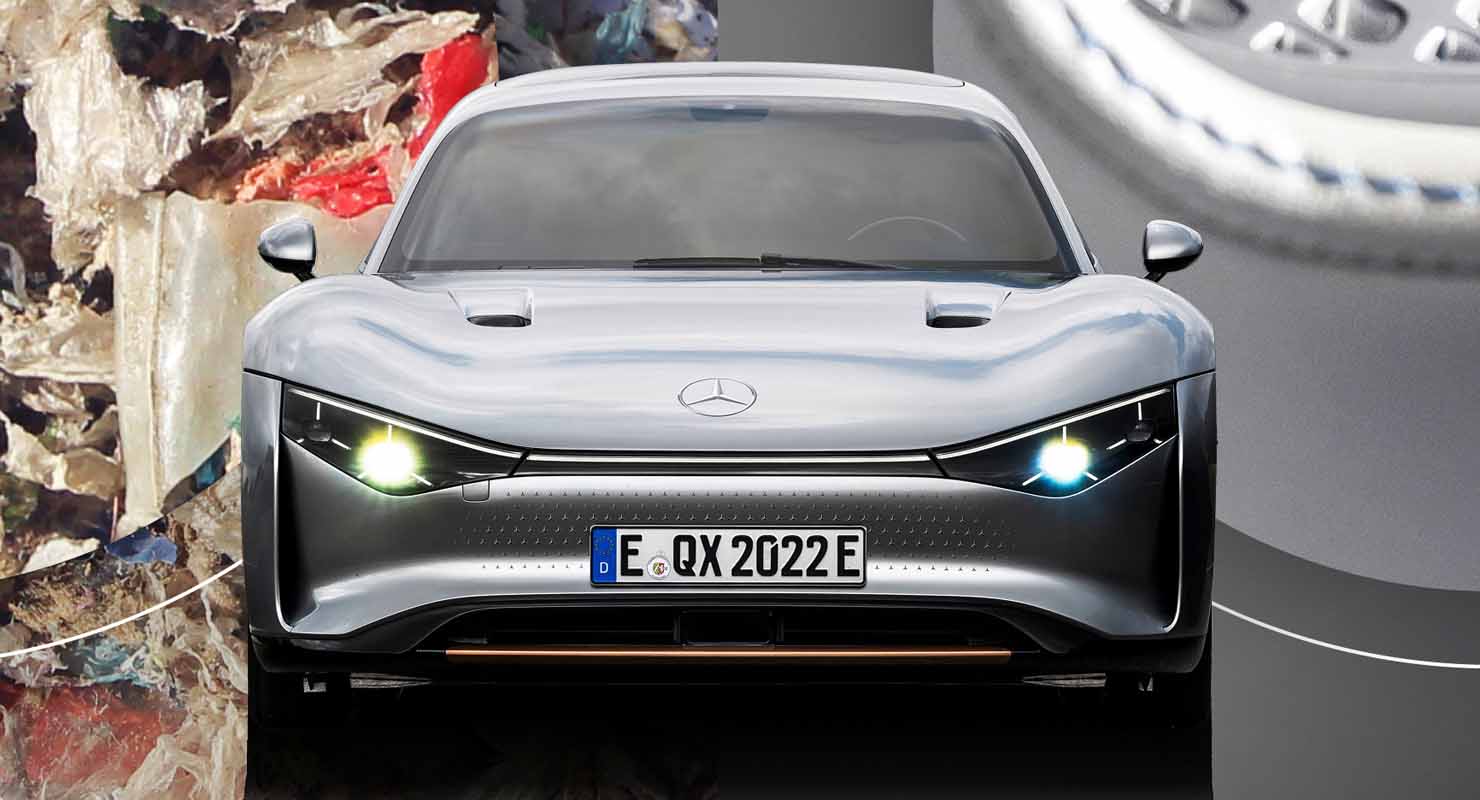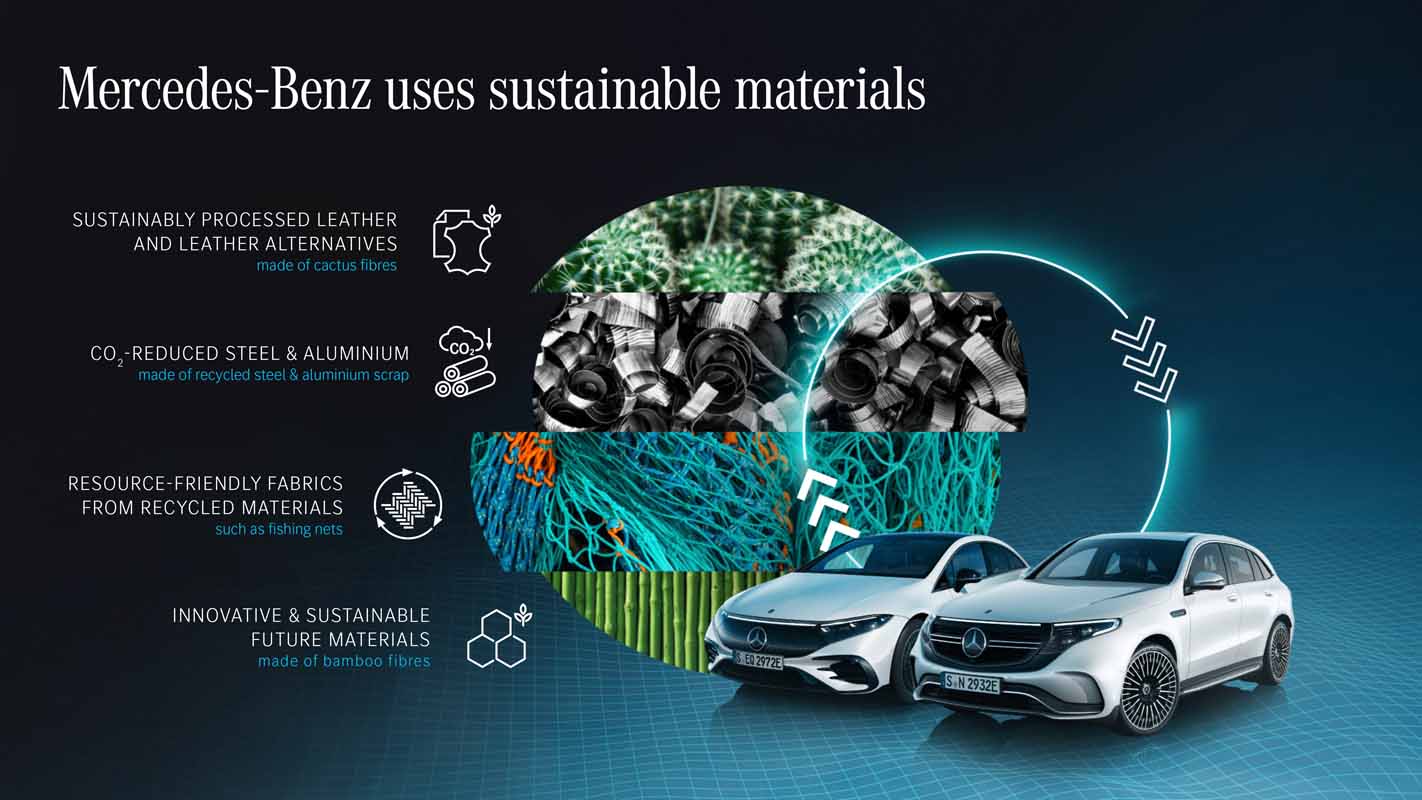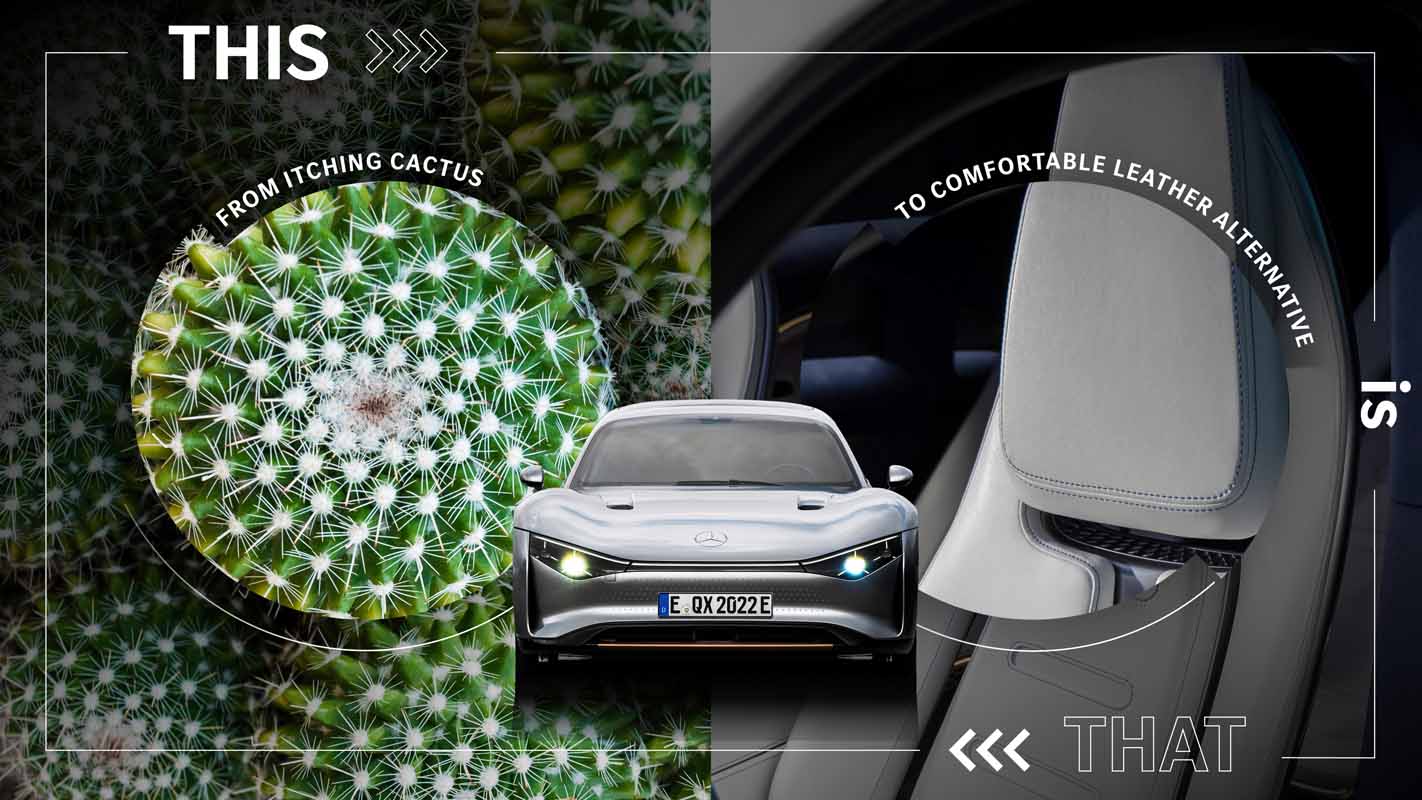
On the road to a fully electric, emission-free future, Mercedes-Benz is pursuing a holistic approach more consistently than ever before. With Ambition 2039, the company’s goal is to have a CO2-neutral fleet of new passenger cars and vans across the entire value chain and life cycle by 2039 – 11 years earlier than EU legislation requires. Special attention is paid to the careful use of resources. The company is working intensively on closing material cycles, significantly increasing the proportion of recycled materials and researching new materials that are in harmony with nature.
“Sustainability is the foundation of all Mercedes-Benz research and development activities. Our goal is to be the technology leader in environmental engineering by achieving more with less. To this end, we are accelerating our innovation speed and bringing new, sustainable technologies into series production as quickly as possible – for example from the VISION EQXX. After only a few months, we are integrating the first sustainable material from our technology programme into ongoing series production. As pilot series, the EQS and EQE will be equipped with cable ducts made from UBQ™, a plastic substitute material derived from household waste,” says Markus Schäfer, Member of the Board of Management of Mercedes-Benz Group AG, Chief Technology Officer responsible for Development and Procurement. “Our vision is to transform our entire value chain into as closed a loop as possible. Our series-production vehicles already contain a large number of recycled materials. Within the next ten years, we will increase the share of secondary raw materials in our passenger car fleet to an average of 40 percent.”
The sustainable UBQ™ material is obtained from the conversion of mixed household waste, which has so far been difficult to recycle and is therefore often thermally processed or ends up in landfill. Feedstock for the material includes food residues, mixed plastics, cardboard and baby nappies. Further applications such as underbody panels, wheel arch linings and engine compartment covers are currently being tested.
Design for Environment
At Mercedes-Benz, sustainability begins in the early stages of product development. The company takes a holistic approach to both CO₂ emissions and resource consumption. When developing the vehicles, the composition of all materials to be used is reconsidered and possibilities for more sustainable alternatives are examined. This applies both to surface materials and to materials that are not visible to the customer. Examples in the vehicle interior include sustainably processed leather, the use of materials with a high recycled content and innovative materials of the future. In the body and body shell, Mercedes-Benz relies on CO2-reduced steel, among other things. The vehicles are designed to be as resource-efficient and environmentally friendly as possible throughout their entire life cycle. Mercedes-Benz calls this “Design for Environment”. The company relies on innovative technologies that meet the demands of luxury and sustainability.
1. SUSTAINABLE LUXURY – LEATHER AND LEATHER ALTERNATIVES
The vehicle interior is an important part of the brand experience for customers. The highest visual and haptic quality is a top priority, along with comfort, functionality and durability. Since the early days of the car, leather has been synonymous with high-quality interior features that many customers desire. Here, too, Mercedes‑Benz takes a holistic approach to making this luxury sustainable.
Sustainably processed leather
Customers who wish for a genuine leather interior therefore do not have to do without sustainability: From next year, Mercedes-Benz will successively offer only sustainably produced and processed leather in all model series. The consideration ranges from livestock breeding to the tanning process. Mercedes-Benz already requires compliance with various animal welfare criteria in its specifications. Among other things, the company requires its suppliers to comply with the “5 Freedoms Of Animal Welfare” of the Animal Welfare Committee in livestock breeding. In addition, an important awarding requirement for suppliers is that the leather supply chain must be free from any form of illegal deforestation and that grazing areas do not contribute to the endangerment or loss of natural forests. In this context, partners must disclose their entire supply chain from the farm region to the final product.
For a more environmentally friendly tanning process, in future only vegetable or alternative sustainable tanning agents that are completely free of chromium may be used – for example dried coffee bean husks, chestnuts or extracts from other renewable raw materials. Furthermore, the leather for Mercedes-Benz products may only be processed in tanneries that are certified according to the Gold Standard of the ‘Leather Working Group’. This includes important environmental aspects such as reducing the use of water, energy and chemicals in the tanning process. In addition, Mercedes-Benz works together with suppliers to continuously improve the sustainability of leather products. For this purpose, the partners are required, for example, to present a life cycle assessment of the entire value chain from the farm to the finished leather. In this way, targeted measures can be taken to reduce the ecological footprint of the leather.

Sustainable leather alternatives
At the same time, Mercedes-Benz is conducting intensive research into animal-free alternatives to genuine leather. They should not only be resource-friendly, but also offer the highest quality in all parameters. Promising alternatives to genuine leather have already been presented in the Mercedes-Benz VISION EQXX, for example made from renewable raw materials such as powdered cactus fibres. Through the power of biotechnology, fungal mycelia are growing into innovative leather alternatives in the lab, pointing to the future of sustainable, luxurious interior equipment. In the development and selection of these materials, the highest possible recycled content or the use of renewable raw materials instead of petroleum-based raw materials are the top priorities.
Mercedes-Benz offers vehicles in many segments worldwide that either have leather-free interior ex works or as part of an individual customer request. The various trim options include a high-quality leather replica as well as a microfibre fleece fabric that has a suede look and feel. It is used in the vehicle interior, for example as seat cover, roof lining and pillar trim and contains a high proportion of recycled materials, which will be continuously increased in the future.
2. CONSERVING RESOURCES THROUGH INNOVATIVE RECYCLING MATERIALS – EXAMPLE FABRIC
Recycled materials are already in series production in many vehicles today. In the interior, for example, Mercedes-Benz offers various high-quality upholstery fabrics made from up to 100 percent recycled PET bottles in addition to leather replica and microfibre. The floor coverings in the EQS use a nylon yarn that comes from recycled carpets and recycled fishing nets. One ton of this yarn saves over 6.5 tons of CO2 compared to new material. In addition, Mercedes-Benz also relies on the use of natural fibres to replace conventional plastics with renewable raw materials.
3. SUSTAINABLE MATERIALS OF THE FUTURE
In Group Research, the company is examining the series launch of promising materials that meet Mercedes-Benz’s high standards of sustainability and quality. This includes a high-performance plastic with a painted surface obtained through innovative chemical recycling. In chemical recycling, used tyres and otherwise difficult-to-recycle plastic waste in particular are broken down into their chemical components in such a way that absolutely new materials can be produced from them. The combination of raw materials from chemical recycling with the renewable raw material biomethane reduces the use of fossil resources. The material could soon be used in door handles.
Another promising material that could be used in rear seat cushions is a partially CO2 based foam. In the polyol, the main component of this automotive-grade polyurethane foam, CO2 which would otherwise be released into the atmosphere is chemically bound. The carbon dioxide can make up to 20 percent by weight of the polyol.
In addition, Mercedes-Benz is intensively researching the readiness for series production of further innovative materials that were presented in the VISION EQXX. These include a silk-like, biotechnologically produced textile that is completely free of animal products as well as carpets made of bamboo fibres. These materials are not only particularly sustainable, but also an exquisite visual and tactile experience.
4. CO2 REDUCTION IN BODY-IN-WHITE AND BODY
A holistic sustainability assessment of all materials includes not only the vehicle interior but also the body and shell. Special attention is paid to materials that are particularly CO2-intensive in production, such as steel and aluminium.
Already in series production: CO2-reduced steel
As part of Ambition 2039, Mercedes-Benz is pursuing the goal of decarbonising the steel supply chain, deliberately focusing on the avoidance and reduction of CO2 emissions rather than compensation. In this way, the company is consistently reducing CO2 emissions in the steel supply chain as a first step: The VISION EQXX uses CO2-reduced flat steel from Salzgitter Flachstahl GmbH, which is produced 100% from scrap in the electric arc furnace. The more than 60% CO2-reduced low-alloyed grades are being integrated simultaneously in initial applications in the current A-Class, the current E-Class, the new C-Class and the EQE.
Mercedes-Benz is thus the first vehicle manufacturer to have introduced this resource-conserving, CO2-reduced sheet metal into series production. The cooperation between Mercedes-Benz AG and Salzgitter Flachstahl GmbH was awarded the MATERIALICA Design + Technology Gold Award 2021 in the category “CO2 Efficiency”.
In addition, Mercedes-Benz sources steel from the US supplier Big River Steel, which reduces CO2 emissions in steel production by more than 70% through the use of recycled steel scrap and renewable energies. By contrast, steel produced using a classical blast furnace emits an average of more than two tons of CO2 per ton.
From 2025: CO2-free steel
In the next step, from 2025 Mercedes-Benz will use steel that is almost completely CO2-free in various vehicle models, thanks to manufacturing with hydrogen instead of coking coal. To this end, the company has become the first car manufacturer to take an equity stake in the Swedish start-up H2 Green Steel (H2GS). As part of a partnership with Swedish steelmaker SSAB, the first prototype parts for body-in-white applications made from fossil-free steel are already being planned for this year. The partner will produce a steel with iron made with hydrogen from its pilot plant in Luleå, which can be used in safety relevant areas of the car body.
Through the partnerships, Mercedes-Benz promotes the transformation of the steel industry and accelerates the development and production of CO2-free steel in Europe.
Recycled aluminium
The decarbonisation of the supply chain is also being consistently worked on in the use of aluminium. With the market launch of the Mercedes-AMG SL, another world premiere is in the starting blocks. In the body‑in‑white of the Mercedes-AMG SL, structural castings made of die-cast alloys made from up to 100 % recycled aluminium scrap are used for the first time. In aluminium production, this saves more than 90% of CO2 emissions.
[1] The WLTP electrical consumption has been determined on the basis of Regulation (EU) No. 2017/1151.














